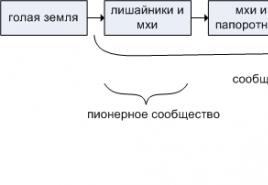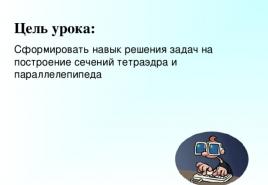Dietary cheese at home. Which cheese is suitable for a diet? Simple tofu dishes
Dietary varieties of cheese suitable for consumption during active weight loss should not contain excess fat and large amounts of casein. The problem with this product lies not only and not so much in its composition, but in the typical method of use. Often we don’t notice exactly how many pieces end up on a sandwich at breakfast, and for some reason we put a dish called “cabbage drowned in grated cheese” in our food diary under the heading “vegetables.” In any case, cheese can be a good source of protein and significantly diversify your diet, the main thing is not to exceed the planned amount.
What dietary types of cheese can you buy in the store?
“The most of the most” is ricotta curd cheese. It is produced from 2 to 20% fat content; low-fat cheese of 2-5% would be ideal for your diet. The calorie content of ricotta ranges from 110 to 200 kcal per 100 g of product. Most varieties contain lactose, but if you are not allergic to it, this component will not affect the speed of weight loss. Ricotta has a similar consistency to sandwich spread. It can be stuffed with tomatoes, bell peppers or baked apples, or used as sandwich cheese. You can eat up to 100 g of this cheese per day. However, make sure that the ricotta is strictly without additives. Some manufacturers add sugar and dried fruits to this cheese, which makes it look like curd mass.
“Number two” on the diet list is low-fat cheese. You can find cheeses with fat content from 10 to 25%. But you need to monitor not only the amount of fat, but also how much salt this cheese contains. Unfortunately, some varieties contain too much sodium chloride, and their consumption promotes fluid retention. Brynza usually “pulls out” 220-260 kcal; only those who limit eggs, meat and other dairy products, and do not abuse fats, can eat more than 50 g of this cheese per day.
“Number Three” is a “fitness” version of regular cheese “Oltermani 17%”, “Atlant” and “Fitness”. These cheeses contain quite little fat, but are higher in calories than feta cheese. On average, such cheese will “cost” your diet from 220 to 300 kcal. Sometimes this category includes low-fat, dense mozzarella, which is sold in “bricks” rather than balls in brine. It is advisable to use these cheeses for baking vegetables or making low-fat sandwiches, and do not exceed the daily limit of 50-60 g.
How to make a healthy variety of cheese at home
Cheese is made from cottage cheese. You can try making homemade low-fat cheese with herbs or spices if you want to add variety to your menu.
"Hard cheese"
400 g of cottage cheese 0%, 200 ml of milk 6% fat, a teaspoon of soda, 2 eggs.
The ingredients are mixed and cooked in a cauldron-type container, stirring constantly for 20 minutes. Then pour it into the mass to harden, add quicklime soda, cover with a lid, and place a weight on top.
"Paneer"
For a Russian person, this is most likely cottage cheese, but in Indian cuisine this product is considered cheese.
1 liter of skim milk, 0.5 liters of kefir, half a glass of lemon juice, any spices you like.
The milk is heated in a water bath, kefir is poured into it and lemon juice is dripped in. As soon as the milk begins to curdle, the mass is filtered, the resulting “cheese” is mixed with spices and left under pressure for 6 hours in the refrigerator.
"Mozzarella"
2 tablespoons lemon juice, 2 liters of milk 2.5% fat, salt, 2 liters of water, pepsin rennet (sold at the pharmacy or spice department).
Heat the milk in a saucepan, add lemon juice, strain, and put the resulting curd in a separate bowl. 1 tsp. We dilute pepsin in 2 tbsp. l. water, mix with cottage cheese. We heat the rest of the water to a temperature of 60-80 degrees, and add the cottage cheese into it. As soon as the mass begins to stretch, we catch it with a slotted spoon, and form balls or a cheese circle and place it under a press for 4-6 hours.
Especially for – fitness trainer Elena Selivanova
Cheese is a healthy and nutritious product that is recommended by most nutritionists and trainers when doing fitness. Some types of cheese are more suitable for fitness nutrition, others less so, but in any case it is an extremely healthy and nutritious product. The choice of cheese to eat during and after fitness depends on many factors.
Let us remind you that according to the amount of fat, cheeses are usually divided into:
low-fat cheeses - less than 20%,
light cheeses - from 20% to 30%,
normal cheeses - from 40% to 50%,
double fat content - from 60% to 75%,
triple fat content - more than 75%.
Low-fat cheeses and light cheeses are made from skim milk, and especially fatty cheeses are made from cream or from whole milk with the addition of cream.
Here is a list of the most and low-calorie cheeses. Products are shown in descending order of calorie content:
1. Low-fat cheese - . This is soy cheese. Its fat content ranges from 1.5 to 4%. Tofu is rich in high-quality proteins, so this cheese can successfully replace meat. In addition, 100 grams of tofu cheese contains only 80 kilocalories. Therefore, tofu is recommended to be included in diet and fitness menus.
2. Low-fat cheese - cottage cheese(fat content 5%). In the USA and European countries (and not only English-speaking ones), grain cottage cheese is called cottage cheese. Calorie content of grain cottage cheese: 98-125 kcal. The lowest calorie produced in Russia is grained cottage cheese “Savushkin product “101 grains + cream” BIO 5%. Its calorie content: 98.6 Kcal.
3. Low-fat cheese - made from skim milk (8%). The calorie content of this cheese is 140 kcal.
4. Low-fat cheese - Kaluga “”, delicious smoked, string. Its fat content is 10% and calorie content: 140 kcal.
5. Low-fat cheese - made from skim milk. The calorie content of this cheese is 149 kcal.
6. Low-fat cheese - Viola Polar, Grünlander, Fitness (5-10%), calorie content: 148 kcal
7. Low-fat cheese - Chechil(fat content 5-10%). Chechil is a fibrous brine cheese with a consistency similar to suluguni. It is produced in the form of dense, fibrous threads, twisted into tight braids in the shape of a pigtail, often smoked. It contains up to 10% fat, no more than 60% moisture, and 4-8% salt. With a fat content of 5%, the calorie content is 155 kcal.
8. Low-fat cheese - Feta Arla Apetina. Apetina in traditional packaging - the cheese has a slightly salty taste and delicate texture. Perfect for preparing salads or as a snack with any type of bread. Nutritional value: proteins 15.0g, carbohydrates 5.0g, fats 8.5g. Calorie content: 160 kcal.
9. Low-fat cheese - feta cheese Arla Apetina Light cubes in brine 22% Arla Natura cheeses have been produced in Denmark, in the hills of the Jutland Peninsula since 1961, at the Norre Vium dairy, known for its ancient traditions and the highest quality standards. Nutritional value 100g: fats 10.3g, proteins 16.5g, carbohydrates 0.1g. Calorie content: 162 kcal.
10 Low-fat cheese - Galbani Mozzarella Light thirty%. Nutritional value: proteins 20g, fats 9g, carbohydrates 0.4g. Calorie content: 163 kcal.
11. Low-fat cheese - Favita Salad thirty%. Salad sandwich cheese Favita. Mass fraction of fat 12%. Nutritional value per 100g: proteins - 14g, fat - 12g, carbohydrates - 3g. Calorie content: 176 kcal. 
12. Low-fat cheese - Cheese Chevrefin Chevrefin fresh goat 40%, – calorie content: 164 kcal.
13. Low-fat cheese product - Kaserei Champignon Dor Blue a la cream, light. Delicately piquant cream with the addition of blue cheese. Mass fraction of fat in dry matter is 15%. Nutritional value per 100g of product: fat - 15.0g, protein - 9.0g, carbohydrates - 3.0g. Energy value - 183 kcal.
14. Low-fat cheese - cheese President Camembert Legey 28%. Nutritional value per 100g of product: protein 24.5g, fat 11g, carbohydrates 0.5g. Calorie content per 100g. - 197 kcal.
15. Low-fat cheese - Gaudette(fat content 7%). Gaudette, the new low-fat cheese from Scherdinger, is an easy delight for those seeking a healthy lifestyle. Calorie content: 199 kcal. Nutritional value: proteins 34g, fats 7g, carbohydrates 0g.
16. Low-fat cheese - Arla, Oltermani(16-17%). Calorie content 210 kcal.
17. Low-fat cheese – low-fat (light), feta (fat content 10%). This cheese is a traditional product of Greek cuisine. But it is eaten with pleasure in many other countries, including ours. Traditional feta is considered a fatty product, high in cholesterol and containing approximately 260 calories.
18. Low-fat cheese - . Its calorie content is 285 kcal.
________________
Salad recipes for fitness nutrition:
Tofu salad with soybeans
Ingredients: tofu - 100 g, boiled soybeans - 100 g, onions - 2 onions, vegetable oil (soybean or sesame) - 4 tbsp. pepper, salt - to taste
Finely chop the tofu and onion, mix with boiled soybeans, salt, pepper, season with oil and mix. It is best to leave it in a cool place for a few minutes before serving.
Tofu and cabbage salad
Ingredients: tofu - 500g, white cabbage - 1/2 head of medium size, onion - 1 onion, cucumbers and tomatoes (fresh) - 4 pcs., apples - 2 pcs., soybean oil - 1/2 cup, mayonnaise ( or sour cream) - 100-150 g, salt, herbs - to taste.
Finely chop the cabbage, finely chop the remaining vegetables, combine everything and mix with grated apples. Grind the tofu thoroughly (or mix in a mixer) with mayonnaise or sour cream and soybean oil, add to the vegetables. Mix everything, add salt to taste and garnish with herbs.
Tofu and lettuce salad
Ingredients: lettuce leaves - 0.5 bunch, tofu - 150 g, salted mushrooms (marinated) - 200 g, green onions - 50 g, dill - 1 bunch, parsley - 1 bunch, sunflower seeds - 2 tbsp. spoons, balsamic vinegar - 2 tbsp. spoons, olive oil - 3-4 tbsp. spoons, young garlic - 2-3 cloves, black pepper.
Tear or chop the lettuce leaves coarsely. Chop the greens. Place lettuce leaves on serving plates (3 servings). Mix the greens in a bowl, add mushrooms and chopped garlic. Small mushrooms can be placed whole, large ones can be cut into 2-4 parts. Mix well and spread the mixture onto the lettuce leaves. For the sauce, combine balsamic vinegar, oil and black pepper. Beat well. Cut the tofu into medium cubes using a wet knife so that the cubes are even and neat. Place tofu on salad. Pour the prepared sauce over the salad. Serve salad with sunflower seeds.
Green salad "Bouquet" with Ricotta cheese
Ingredients: Ricotta cheese - 1 package, Romaine salad - 80 gr., Frisse salad 30 gr., Radiccio salad - 30 gr., walnuts - 2 nuts, Extra Vergin olive oil - 2 Art. spoons, balsamic vinegar - 2 tbsp. spoons, honey, liquid 2 tbsp. spoons.
It is convenient to prepare the salad directly in a plate or large dish and place it on the plate with tongs so as not to overturn it. Tear the salads coarsely with your hands and place on plates. Using a teaspoon, carefully place the cheese on top in pieces, trying to maintain their shape. It is better to use Galbani brand Ricotta cheese for this salad. The salad does not mix. Sprinkle ground nuts on top of the salad, season with oil, sprinkle with balsamic vinegar and pour over a thin stream of honey.
from Ricotta with orange
Ingredients: ricotta cheese - 200 g, parsley - 100 g, orange - 1 pc, lemon - 1 pc, beets - 4 pcs, red onion - 1/2 pc, olive oil - 50 ml, salt - to taste, ground black pepper - to taste.
Squeeze juice from orange and lemon. Pour it into a deep bowl and add olive oil, salt and pepper. Mix thoroughly. Wash and peel the beets. We cut it into thin strips. We clean and chop the onion. Wash the parsley, dry it and chop it finely. Place the beets, onions and parsley in the bowl with the sauce. Mix well and leave for 20-30 minutes. Add ricotta to the bowl with vegetables. Stir and add salt and pepper to taste. Place the salad on a plate and garnish with parsley leaves. If you use pre-boiled beets rather than raw ones, then you don’t need to marinate them in the sauce for so long. It is enough to let it brew for 3-5 minutes.
Mozzarella salad with tomatoes and cheese
For 2 servings: 2 tomatoes, 1 pack of Mozzarella cheese (250 g), basil, olive oil, salt, pepper
Wash the tomatoes and cut into slices. Drain the brine from the Mozzarella and cut into slices. Place tomatoes and cheese alternately on a serving plate. Drizzle with oil and season with salt and pepper. Garnish with basil sprigs.
Mozzarella salad with shrimp and basil
For 4 servings: 4 regular prawns, 8 large prawns, 300g plum tomatoes, 2 sprigs green onions, 250g Mozzarella Light cheese, basil, oil, salt, pepper
Cut the tomatoes in half, the onion into half rings. Season with salt, pepper and basil.
Peel the shrimp and boil in boiling salted water for 1 minute. Arrange tomatoes, onions and Galbani Mozzarella Light cubes on a plate. Place shrimp on top. Season as desired.
Mozzarella salad with mango and avocado
For 4 servings: 200g fresh arugula, 2 fresh mangoes, 2 fresh avocados, 2 packs Light Mozzarella cheese (125g), juice of 2 limes, fresh chilli, 2 green onions
Wash and dry all ingredients, especially arugula. Cut the avocado in half, remove the pit, peel and cut into thin slices. Same thing with mangoes. Cut Galbani Light Mozzarella into thin slices. Alternately place mango, avocado, arugula and cheese on a plate.
In a small bowl, prepare the dressing: cut the chili into thin rings, mix with lime juice, slowly pour in the olive oil, stirring constantly. Drizzle the salad with dressing and garnish with green onions. Serve chilled.
Bon appetit and good figure!
Calorie content (energy value) of food is the amount of energy received by the body after its complete absorption. In order to determine the energy value of the product, it is burned in a calorimeter. Then the amount of heat released into the environment is determined. If a person eats more calories per day than he expended, excess weight appears.
The maximum amount of calories is produced in the process of digesting fatty foods, and extra “folds” appear on the body. If you dream of getting rid of a few extra pounds, you need to select low-calorie foods. It is customary to call a diet rational if it implies compliance with the proportion between animal and vegetable proteins 55% to 45%, vegetable and animal fats as 30% to 70%.
Diet foods are foods with a negative or minimal amount of calories. Dietary nutrition involves consuming a significant amount of liquid, at least 1.5 liters per day, and low-calorie foods.
Is it possible to lose weight by eating cheese?
Cheese is an unsweetened dairy product that contains a significant amount of protein. Among the main disadvantages of cheeses, high fat content should be noted. The increased calorie content of this product has long made it inappropriate for dietary nutrition.
Currently, special diets are offered that allow the use of special varieties of cheese with low fat content.
The problem of buying low-fat cheese
What is the effectiveness of the cheese diet? Similar to a variety of protein foods, you can try the “cheese” option for weight loss.
Among the tested and effective options for the cheese diet, one can note a 7-10-day low-calorie diet based on cheese and other protein products, which includes additives from vegetables and fruits. The calorie content of this nutrition option is 1500-1900 kcal, additional physical activity is assumed. Staying on such a diet for 10 days allows you to reduce weight by 3-5 kilograms. Such nutrition is not balanced, however, it gives excellent results.
Less common are longer-term cheese diets, which involve strict restrictions on the type of cheese consumed. Options with minimal fat content are rarely found on the shelves of regular grocery stores. Mostly, customers are offered varieties of cheeses with a fat content of more than 40%. For example, such a popular cheese as “Maasdam”, which has a fat content of 45%, has a calorie content of 348 kcal per 100 grams. Such characteristics do not allow us to consider that it is the lowest-calorie cheese, and it is not worth recommending for dietary nutrition.
How to choose low-calorie cheese?
For a long time, nutritionists have not been able to decide on the type of cheese with the lowest calorie content; their opinions differ. The line between “diet” and “regular” cheeses is set at 30 percent. Some cheese manufacturers indicate the fat content of their product at 29%, but the calorie content will be about 360 kcal, which exceeds the calorie content of the Maasdam described above. Do not forget to ensure that the product has the “correct” numbers, because otherwise you risk not losing weight, but gaining extra pounds.
Eight of the lowest fat cheeses
Let's list some options for low-calorie cheeses, the use of which will help you maintain a slim and beautiful figure. To do this, instead of Roquefort you need to use cottage cheese. You can find such products on the shelves of large supermarkets:
When choosing low-fat light cheese, do not forget that for weight loss, only observing a sense of proportion in the process of “eating light cheeses” will give the desired result - weight loss. And the cheese diet does not mean that you should only eat cheese - you need to harmoniously combine it with plenty of vegetables and fruits.
Dietary cheeses, useful for consumption during the period of active weight loss, never contain excess fat and casein in large quantities. Why then do some people manage to get fat from using them?
The problems with these products lie not so much in their chemical composition, but in the usual method of consumption. People often don’t even notice how many pieces of their favorite delicacy they eat on a sandwich at breakfast, and for some reason 80 percent cheese is added to a dish called “cabbage with grated cheese.” And all this under the heading “vegetable nutrition”.
For any diet, cheese is a good source of protein; it significantly diversifies the menu, the main thing is not to exceed the planned amount of product.
What types of dietary cheese are sold in the store?
 The most dietary one is ricotta curd cheese. It is produced with fat content from 2 to 20%. For people on a diet, low-fat cheese is ideal - 2-5%. Ricotta has a fluctuating calorie content: from 110 to 200 kcal per 100 g of cheese. Most varieties contain lactose, but if you are not allergic to it, this component may not affect the speed of weight loss. Ricotta has a consistency similar to sandwich spread. It is good for stuffing bell peppers, tomatoes or even baked apples, and it is convenient to use as cheese for sandwiches. You are allowed to eat up to 100 g of this cheese in one day. However, read the label: ricotta must be strictly without additives. Sometimes manufacturers add dried fruits and sugar to cheese, making it like curd mass.
The most dietary one is ricotta curd cheese. It is produced with fat content from 2 to 20%. For people on a diet, low-fat cheese is ideal - 2-5%. Ricotta has a fluctuating calorie content: from 110 to 200 kcal per 100 g of cheese. Most varieties contain lactose, but if you are not allergic to it, this component may not affect the speed of weight loss. Ricotta has a consistency similar to sandwich spread. It is good for stuffing bell peppers, tomatoes or even baked apples, and it is convenient to use as cheese for sandwiches. You are allowed to eat up to 100 g of this cheese in one day. However, read the label: ricotta must be strictly without additives. Sometimes manufacturers add dried fruits and sugar to cheese, making it like curd mass.
Number two on this diet list is low-fat cheese. You may encounter cheese with a fat content of 10 to 25%. However, you need to track not only how much fat, but also how much salt was added to the composition of this cheese. Unfortunately, many varieties of cheese contain a lot of sodium chloride, and when they are consumed, fluid retention occurs. Cheese cheese usually has a caloric content of 220-260 kcal. Eating more than 50 g per day of this cheese is allowed only to those who eat few eggs, meat, dairy products, and control the amount of fat in products.
At number three are Atlant and Fitness cheeses. These are diet versions of regular Oltermani cheese. These cheeses contain little fat, but they are still higher in calories than feta cheese. Such cheeses will cost your diet an average of 260 kcal. Often this category includes dense, low-fat mozzarella, which is sold in “bricks” rather than in brine balls. These types of cheeses are good for baking vegetables, or making low-fat sandwiches from them, but you should not exceed the daily limit of cheese - 50-60 g.
How to prepare dietary cheeses at home
Cheese is made from cottage cheese. You can try making low-fat cheese at home with the addition of herbs or spices if you want to add more variety to your menu.
"Hard cheese"
- Cottage cheese 0% - 400 g.
- Milk 6% fat - 200 ml.
- Soda - a teaspoon.
- Eggs – 2 pcs.
- Mix all ingredients and cook in a casserole for 20 minutes, stirring continuously. Now pour the mixture into a container to harden, add quicklime soda, cover with a lid and place a weight on it.
 A Russian person will most likely think that this is cottage cheese, but Indian cuisine considers this product to be cheese.
A Russian person will most likely think that this is cottage cheese, but Indian cuisine considers this product to be cheese.
- Skim milk - 1 l.
- Kefir - 0.5 l.
- Lemon juice – half a glass.
- - any that you like.
- Heat the milk in a water bath, pour kefir into it and add lemon juice. After the milk begins to curdle, the mass must be filtered, and the resulting product mixed with spices and left for 6 hours in the cold under pressure.
Other interesting articles
Life without cheese is not life. Cheese with wine or in a sandwich, separately or in a complex dish, in any form it is extremely healthy.
“Cheese is a powerful source of nutrients such as protein, phosphorus and calcium,” says Jim White, a spokesman for the Academy of Nutrition and Dietetics. It ranks second in calcium content among other foods.”
In fact, you can even lose weight by eating low-fat cheeses for your diet. Researchers have published a diet based on cheese, because it contains a lot of butyric acid, a substance that speeds up metabolism and reduces the risk of obesity. This is probably why the average Frenchman, who eats 25.9 kg of cheese per year, is slimmer than the average American.
Low-fat cheese: diet list

Pecorino Romano
This is a heavy, Italian sheep's milk cheese. Rich in CLA (conjugated linoleic acid), which, as shown by five-year studies by American and Italian scientists, reduces BMI (body mass index), the risk of diabetes, cancer and infectious diseases. Make sure the label says cheese and not a cheese product.
A version of Sardinian and Lazio cheese from the Tuscan province of Grosseto.
"Keep in mind that sheep's milk cheeses are richer in calcium than cow's milk cheeses," says nutritionist Georgie Strah, author of Lifetime Slim Habits.
“You'll never want to eat cheese again if you find out that many of the cheeses on supermarket shelves aren't technically cheese at all. Look at the label. "The phrase 'pasteurized, processed cheese' means it's 100% cheese; a 'pasteurized, processed cheese product' is only about 51% cheese," explains White. The remaining percentage consists of emulsions, vegetable oils, and additives harmful to the body.
Saturated fats aren't that bad. A 2015 study in the Journal of Clinical Nutrition found that people who consumed 100 - 200 grams. (about 20 slices of cheese) full-fat dairy products per day, lower risk of type 2 diabetes. There are certain low-fat versions of cheese - dietary cheese whose calorie content is very low, however, it is important to remember that in order to obtain the desired texture, manufacturers often add starch or gum to the composition of such cheese.
Fermented milk curd mass
 “It’s no coincidence that all bodybuilders eat a lot of cottage cheese,” White says. Half a glass of cottage cheese contains 15 grams. Protein helps gain muscle mass. In addition, in 2014, the results of a study of 612 types of cheese were published in the British Journal. They prove that cottage cheese has the lowest sodium content (especially soft, fresh types).
“It’s no coincidence that all bodybuilders eat a lot of cottage cheese,” White says. Half a glass of cottage cheese contains 15 grams. Protein helps gain muscle mass. In addition, in 2014, the results of a study of 612 types of cheese were published in the British Journal. They prove that cottage cheese has the lowest sodium content (especially soft, fresh types).
Young curd cheeses
A peculiar feature of these cheeses is the aftertaste, the so-called “umami” or “fifth taste”. A 2015 study showed that umami makes low-fat foods taste better and also improves digestion. For example, Adyghe cheese is the most dietary milk-based cheese.
If you want to eat organic, start with cheese. Fats from non-organic livestock contain many hormones and antibiotics. A 2013 study in PLOS ONE showed that organic dairy products contain 62% more omega-3 than industrial milk.
Ricotta
The taste of the pasta will be improved by ricotta: 200 - 300 gr. of this cheese contains 14 g. protein and meets 25% of the daily calcium requirement. It also has a low sodium content and a lot of phosphorus, vitamin B, A and zinc.
Aged Cheddar
The worst thing that can stop you from loving cheese is lactose intolerance. Fortunately, aged cheddar contains relatively little lactose. Therefore, people with this disease can safely enjoy cheddar cheese without harm to the body.
We can talk a lot about the benefits and unsurpassed tastes of different types of cheese. But, it’s better not to say, but to cut off a slice of hard aged or soft, blue or cellular cheese and enjoy the unique cheese taste. Dietary varieties of cheese not only add variety to our diet, but also bring positive emotions from the excellent taste. And may this moment give you energy and health!







